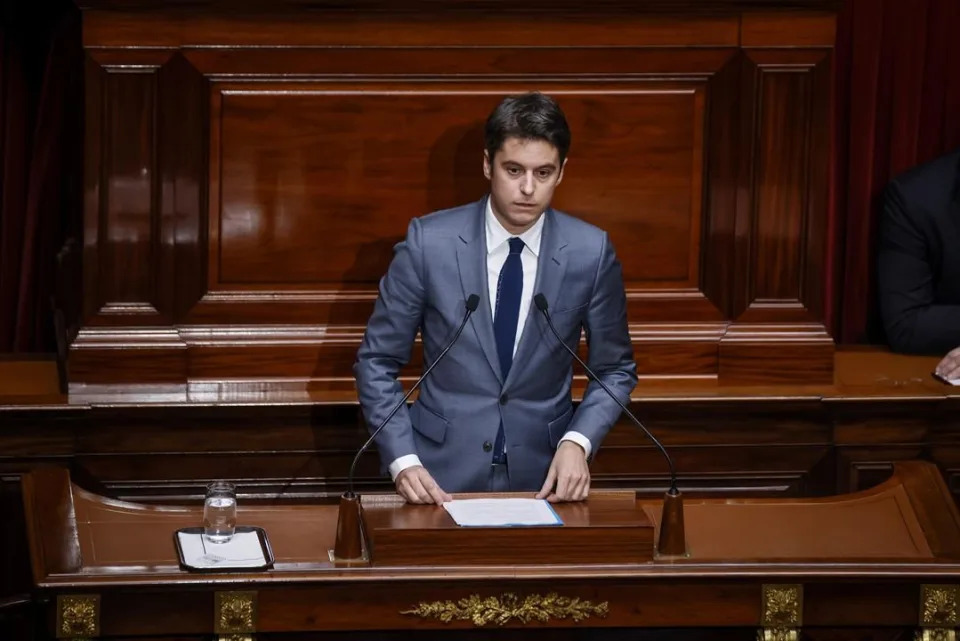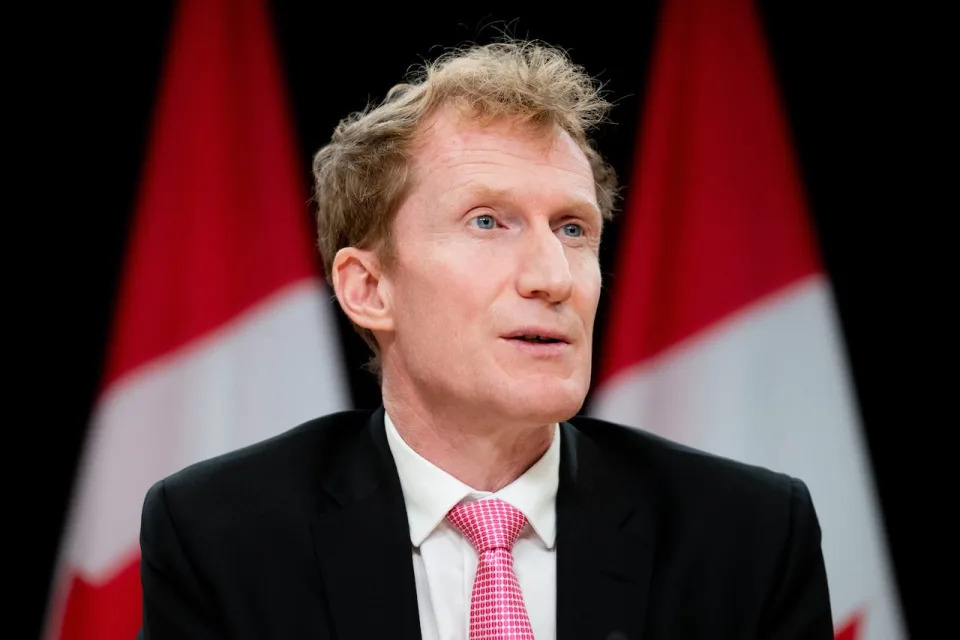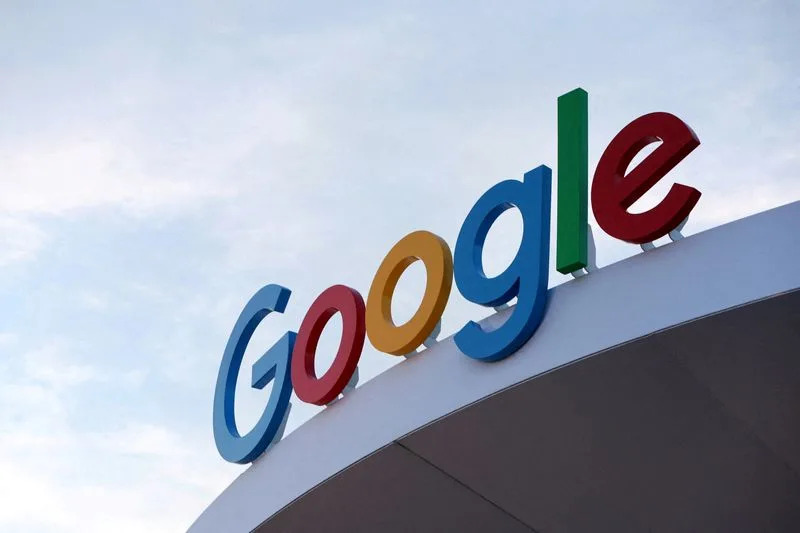Apple gets squeezed by antitrust regulators on both sides of the Atlantic
Alexis Keenan
·Reporter
Mon, March 4, 2024
Apple is getting squeezed by antitrust regulators on both sides of the Atlantic.
Just as the tech giant braces for a sweeping lawsuit from the Justice Department in the US, it was hit Monday with a $2 billion European Commission (EC) fine for allegedly breaking competition laws overseas.
Apple intends to fight the decision from the European Union’s antitrust regulator. It also has been trying to convince Justice Department officials not to file their suit, according to media reports.
The company and its lawyers even met with Assistant Attorney General Jonathan Kanter in late February to make a last-ditch argument, according to those reports.
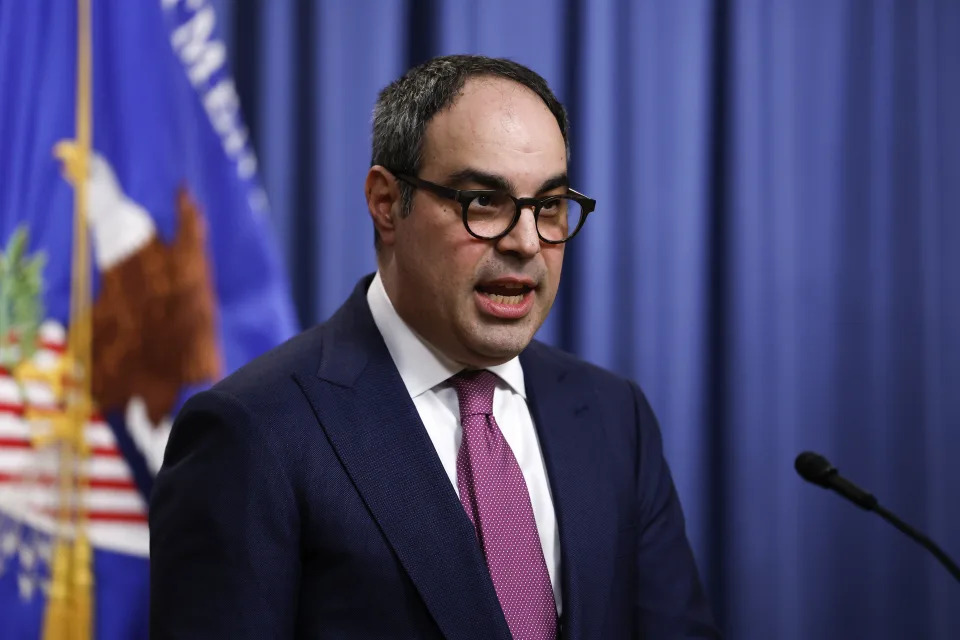
Jonathan Kanter, assistant attorney general for the Department of Justice. (Anna Moneymaker/Getty Images) (Anna Moneymaker via Getty Images)
Apple (AAPL) has long avoided the government-induced antitrust headaches now plaguing Big Tech rivals like Amazon (AMZN), Google (GOOG, GOOGL), and Meta (META). But that is now changing.
Apple's stock was down nearly 3% during morning trading, following the decision by the European Commission.
The EC’s action was very specific: It fined the company for wielding its dominance to the detriment of its rivals in the market for the distribution of music streaming apps.
Those practices first came under investigation in the European Union in 2019 after Swedish music streaming giant Spotify (SPOT) filed a formal complaint about the store's rules.
The EC concluded that Apple drove up music streaming costs for iOS users for nearly a decade by prohibiting app developers from fully informing them about alternative ways to access and pay for streaming services outside of Apple’s proprietary app store.
Through provisions in Apple’s contracts, the EC said Apple illegally steered app purchases predominantly through the App Store, where Apple collects a 30% fee.
"Apple's conduct, which lasted for almost ten years, may have led many iOS users to pay significantly higher prices for music streaming subscriptions because of the high commission fee imposed by Apple on developers and passed on to consumers in the form of higher subscription prices for the same service on the Apple App Store," the commission said in a summary of its findings.
In response, Apple criticized the EC, saying that its decision failed to uncover any credible evidence of consumer harm, and ignored that the music streaming market is thriving, competitive, and fast-growing.
"The primary advocate for this decision — and the biggest beneficiary — is Spotify," Apple said in a blog post. It went on to point out that Spotify had grown to become the largest music streaming app in the world while paying Apple nothing for its services.
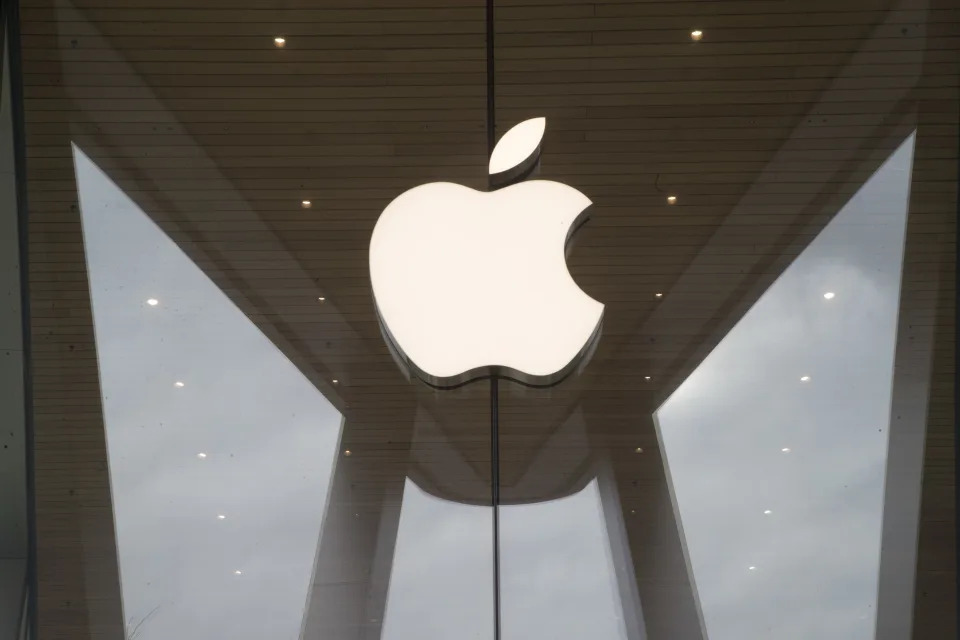
An Apple store in the Brooklyn borough of New York City. (Mary Altaffer/AP Photo) (ASSOCIATED PRESS)
"Today, Spotify has a 56 percent share of Europe’s music streaming market — more than double their closest competitor’s," Apple said, attributing a major part of that success to the App Store.
Apple has previously characterized Spotify's complaint with the EC as an attempt to get "limitless access" to Apple's tools, free of charge.
The US antitrust investigation appears to be even more sweeping, according to media reports. Investigators are looking into whether the integration between the company’s suite of products — including iPhones, the App Store, Apple Watch, iMessage, and AirTags — blocks competition.
Any DOJ lawsuit seeking to dismantle Apple’s "walled garden" ecosystem would pose a major threat to the company's various revenue streams.
Apple generates the bulk of its cash through the sale of its wildly popular iPhone, which accounted for $200.6 billion of the company's $383.3 billion in total revenue in 2023. But Apple's services and hardware that tie into the iPhone are also incredibly lucrative.
The company's wearables, home, and accessories business, which includes its Apple Watch and AirPods sales, generated $39.8 billion last year, while its growing services business, which includes subscriptions for things like Apple Music+ and App Store sales, brought in $85.2 billion.
Alexis Keenan is a legal reporter for Yahoo Finance. Follow Alexis on Twitter @alexiskweed.
CRIMINAL CAPPLETALI$M
Apple gets fined nearly $2 billion by the EU for hindering music streaming competition
Mon, March 4, 2024

EU Commission Vice President Margrethe Vestager addresses the media Monday at EU headquarters in Brussels. (Geert Vanden Wijngaert/AP Photo)
LONDON (AP) — The European Union leveled its first antitrust penalty against Apple on Monday, fining the U.S. tech giant nearly $2 billion for unfairly favoring its own music streaming service by forbidding rivals like Spotify from telling users how they could pay for cheaper subscriptions outside of iPhone apps.
Apple muzzled streaming services from telling users about payment options available through their websites, which would avoid the 30% fee charged when people pay through apps downloaded with the iOS App Store, said the European Commission, the 27-nation bloc’s executive arm and top antitrust enforcer.
“This is illegal. And it has impacted millions of European consumers who were not able to make a free choice as to where, how and at what price to buy music streaming subscriptions,” Margrethe Vestager, the EU's competition commissioner, said at a news conference in Brussels.
Apple — which contests the decision — behaved this way for a decade, resulting in "millions of people who have paid two, three euros more per month for their music streaming service than they would otherwise have had to pay," she said.
It's the culmination of a bitter, yearslong feud between Apple and Spotify over music streaming supremacy. A complaint from the Swedish streaming service five years ago triggered the investigation that led to the 1.8 billion-euro ($1.95 billion) fine.
The decision comes the same week new rules take effect to prevent tech giants from cornering digital markets.
The EU has led global efforts to crack down on Big Tech companies, including three fines for Google totaling more than 8 billion euros, charging Meta with distorting the online classified ad market and forcing Amazon to change its business practices.
Apple's fine is so high because it includes an extra lump sum to deter it from offending again or other tech companies from carrying out similar offenses, the commission said.
It's not the only penalty that the tech giant could face: Apple is still trying to resolve a separate EU antitrust investigation into its mobile payments service by promising to open up its tap-and-go mobile payment system to rivals.
Apple hit back at the commission and Spotify, saying it would appeal Monday's fine.
“The decision was reached despite the Commission’s failure to uncover any credible evidence of consumer harm, and ignores the realities of a market that is thriving, competitive, and growing fast,” the company said in a statement.
It said Spotify stood to benefit from the EU's move, asserting that the Swedish streaming giant met over 65 times with the commission during the investigation, holds a 56% share of Europe’s music streaming market and doesn’t pay Apple for using its App Store.
“Ironically, in the name of competition, today’s decision just cements the dominant position of a successful European company that is the digital music market’s runaway leader,” Apple said.
Spotify said it welcomed the EU fine, without addressing Apple's accusations.
“This decision sends a powerful message — no company, not even a monopoly like Apple, can wield power abusively to control how other companies interact with their customers,” Spotify said in a blog post.
The commission's investigation initially centered on two concerns. One was the iPhone maker's practice of forcing app developers selling digital content to use its in-house payment system, which charges a 30% commission on all subscriptions.
But the EU later dropped that to focus on how Apple prevents app makers from telling their users about cheaper ways to pay for subscriptions that don’t involve going through an app.
The investigation found that Apple banned streaming services from telling users about how much subscription offers cost outside of their apps, putting links in their apps to pay for alternative subscriptions or even emailing users to tell them about different pricing options.
“As a result, millions of European music streaming users were left in the dark about all available options,” Vestager said, adding that the commission's investigation found that just over 20% of consumers who would have signed up to Spotify's premium service didn't do so because of the restrictions.
The fine comes just before new EU rules are set to kick in that are aimed at preventing tech companies from dominating digital markets.
The Digital Markets Act, due to take effect Thursday, imposes a set of do's and don'ts on “gatekeeper” companies including Apple, Meta, Google parent Alphabet, and TikTok parent ByteDance — under threat of hefty fines.
The DMA's provisions are designed to prevent tech giants from the sort of behavior that's at the heart of the Apple investigation. Apple has already revealed how it will comply, including allowing iPhone users in Europe to use app stores other than its own and enabling developers to offer alternative payment systems.
Vestager warned that the commission would be carefully scrutinizing how Apple follows the new rules.
“Apple will have to open its gates to its ecosystem to allow users to easily find the apps they want, pay for them in any way they want and use them on any device that they want," she said.
Kelvin Chan, The Associated Press
EU regulators slap £1.5bn fine on Apple after years-long spat with Spotify
August Graham, PA Business Reporter
Mon, March 4, 2024
Tech giant Apple has been fined 1.8 billion euros (£1.5 billion) by regulators in Europe for not allowing music streaming apps like Spotify to tell customers they can subscribe for cheaper if they do not use Apple’s App Store.
The European Commission said that Apple had abused its dominant position in the market for distributing music streaming apps, and had broken EU antitrust rules in the process. Apple said it would appeal the decision.
The iPhone-maker said: “The decision was reached despite the Commission’s failure to uncover any credible evidence of consumer harm, and ignores the realities of a market that is thriving, competitive, and growing fast.”
Swedish music giant Spotify filed a complaint to the EU in 2019 which claimed that Apple limits choice and competition by charging a 30% fee on purchases made through the App Store.
Spotify called this an unfair “tax” which benefits Apple Music, the tech giant’s own music platform which does not get charged the same fees.
Spotify also said that it is not allowed to tell customers there are cheaper ways to subscribe outside the App Store.
Apple said that it had a “key role supporting Spotify’s success” over the years.
“We’ve even flown our engineers to Stockholm to help Spotify’s teams in person,” it said.
But the European Commission appeared to agree with Spotify on Monday saying: “Apple bans music streaming app developers from fully informing iOS users about alternative and cheaper music subscription services available outside of the app and from providing any instructions about how to subscribe to such offers.”
This could “negatively affect the interests of iOS users,” who will not be able to make informed decisions and may paid “significantly higher prices for music streaming subscriptions”.
Competition commissioner Margrethe Vestager said: “For a decade, Apple abused its dominant position in the market for the distribution of music streaming apps through the App Store.
“They did so by restricting developers from informing consumers about alternative, cheaper music services available outside of the Apple ecosystem.
“This is illegal under EU antitrust rules, so today we have fined Apple over 1.8 billion euros.”
Apple said: “Apple has been a part of Europe for over 40 years, and today, we support more than 2.5 million jobs across the continent.
“We’ve helped markets thrive, promoting competition and innovation at every turn — and the App Store is an important part of that story.
“So while we respect the European Commission, the facts simply don’t support this decision. And as a result, Apple will appeal.”
EU fine wipes $78bn off Apple’s valuation
Chris Price
Mon, 4 March 2024
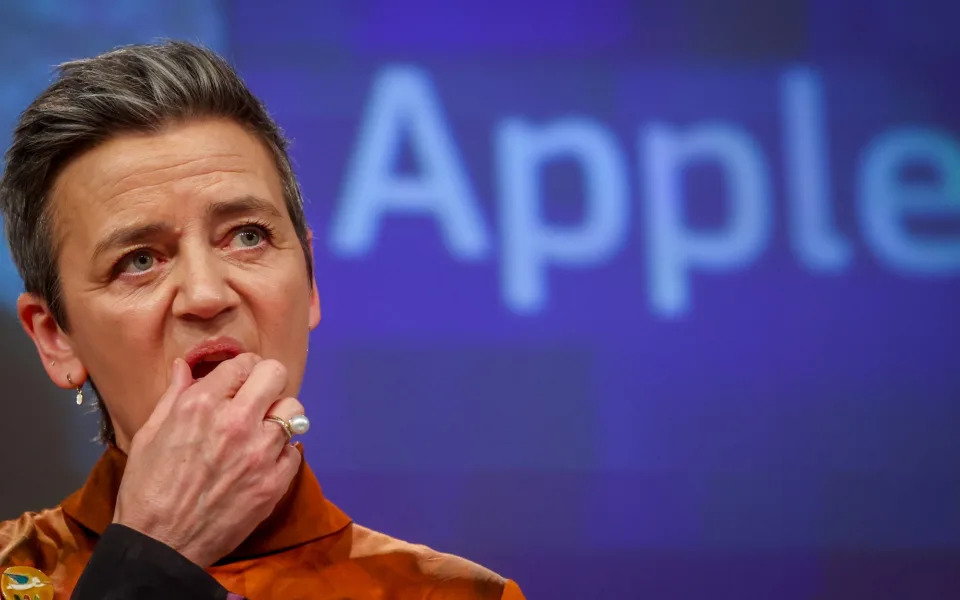
European Commission's competition chief Margrethe Vestager said Apple has 'abused its dominant position' - OLIVIER HOSLET/EPA-EFE/Shutterstock
More than $78bn (£61bn) has been wiped off the value of Apple after it was fined €1.8bn (£1.6bn) by the European Union for breaking the bloc’s competition laws by favouring its own music streaming service over rivals.
The US tech giant’s shares have dropped 2.9pc after it was issued the penalty for raising the price iPhone users pay for music streaming by banning apps like Spotify from promoting cheaper alternatives.
Margrethe Vestager, the European Commission’s competition chief, said Apple had abused a dominant position for a decade, meaning that rivals to Apple Music found it more difficult to compete.
The fine is the first that the EU has imposed on the tech giant. The European Commission said Apple had imposed “anti-steering provisions” that prevented apps such as Spotify from directing users to cheaper subscriptions if users subscribed outside of its app.
The investigation into Apple’s practices was triggered after Spotify made a complaint five years ago.
Apple charges fees of up to 30pc for music subscriptions bought through apps, meaning many streaming companies have offered cheaper alternatives on their website, or stopped offering in-app subscriptions altogether.
Ms Vestager said: “For a decade, Apple abused its dominant position in the market for the distribution of music streaming apps through the App Store. They did so by restricting developers from informing consumers about alternative, cheaper music services available outside of the Apple ecosystem. This is illegal under EU antitrust rules, so today we have fined Apple over €1.8bn.”
Apple said the Commission had failed “to uncover any credible evidence of consumer harm, and ignores the realities of a market that is thriving, competitive and growing fast”.
It said Spotify had “co-ordinated” with the Commission, meeting 65 times over eight years, pointing out that the company is based in Sweden. The company said it would appeal.
